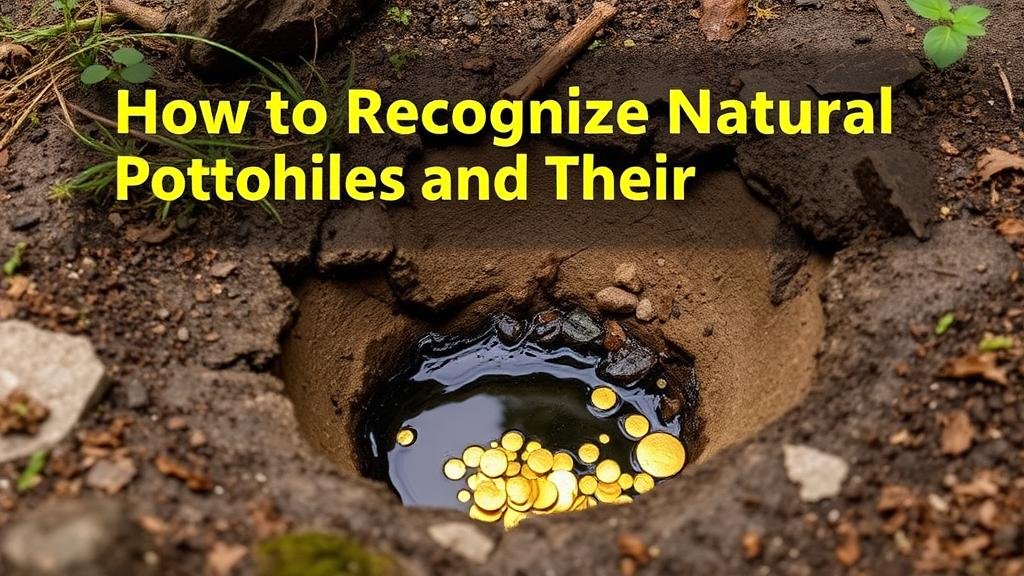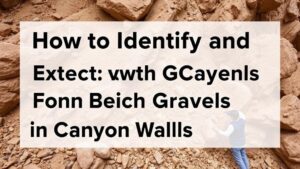How to Recognize Natural Potholes and Their Gold Potential
How to Recognize Natural Potholes and Their Gold Potential
Natural potholes, often seen as mere geological curiosities, can be significant indicators of potential gold deposits. Understanding how to identify these features can lead prospectors toward fruitful discoveries. This article explores the characteristics of natural potholes, their formation, and their implications in gold prospecting.
Understanding Potholes in Geology
A pothole is a deep, round hole formed by the erosive action of flowing water, often found in riverbeds and glacial environments. formation of these features is typically caused by sedimentary processes where water flows over rock and erodes it over time, often accentuated by debris and abrasive materials lodged in the rock.
Geologists classify potholes according to their size and formation process. They may vary from small depressions to large basins capable of accumulating sediment. Most notably, the size of a pothole can influence sediment retention, making these features potential reservoirs for minerals and precious metals.
Identifying Natural Potholes
Recognizing natural potholes involves observing specific geographic and geological indicators. Here are the critical features to look for:
- Location: Potholes are commonly found in riverbeds or along glacial outwash channels. High-mineral-content streams often have the best potential.
- Shape and Depth: True potholes are typically round or oval and can vary in depth. The depth can enhance the potential for sediment accumulation.
- Surrounding Geology: Examine the surrounding rock types. Areas with metamorphic or igneous rocks often host gold deposits, especially when intersected by quartz veins.
- Evidence of Erosion: Look for signs of wear and tear on the surrounding rocks, which suggests a history of strong water flow capable of forming deeper holes.
Gold Association with Potholes
Natural potholes can act as traps for gold and other heavy minerals. When sediment flows into a pothole, heavier particles, including gold, tend to settle at the bottom. This process is known as gravitational segregation.
For example, the famous Klondike Gold Rush in the late 19th century saw prospectors targeting river potholes that had accumulated deposits of gold-rich sediment. Many successful claims were based on observing natural potholes well upstream from known gold mines. This demonstrated that these features can serve as indicators of potential gold deposits.
Recent Studies and Findings
According to a study published in the journal Geological Society of America, researchers found that ancient river systems containing potholes were conducive environments for gold to accumulate. They reported that geological formations paired with high sediment dynamics result in significant gold retention. study showed that within selected potholes in a specific region of California, concentrations of gold particles were found to be up to 5 grams per ton of sediments.
Practical Steps for Prospectors
For aspiring gold prospectors, recognizing and exploring natural potholes entails several actionable steps:
- Research and Map: Use topographical maps to identify river systems and features indicative of potential potholes.
- Field Observation: Spend time near areas with known gold activity. Look for potholes that meet the identification criteria discussed earlier.
- Sample Testing: Conduct test panning in identified potholes to ascertain sediment content. This can confirm the presence of gold particles.
- Documentation: Keep a detailed record of locations, sediment characteristics, and any gold finds to track patterns and improve your methodology.
Conclusion
Recognizing natural potholes and understanding their relationship to gold deposits can significantly enhance a prospectors chances of success. By leveraging geological knowledge, conducting thorough field analysis, and utilizing proven testing methods, individuals can navigate the complexities of gold prospecting with greater assurance. As always, adopting an analytic approach will yield the best results in this captivating field.



